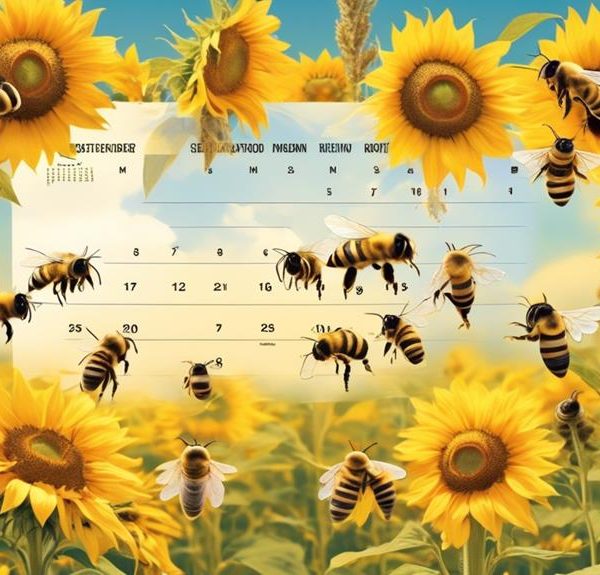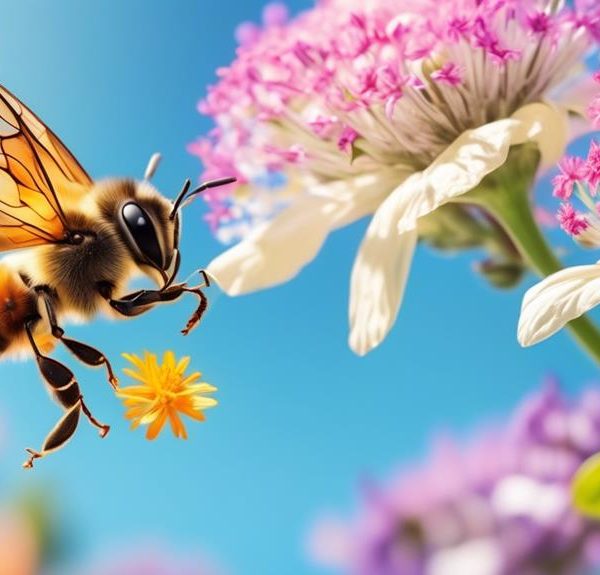Curious about the constant bee visits to your door? Discover the surprising factors attracting these buzzing guests and learn how to discourage them.

Why Are Bees Always at My Door
Ever wondered why bees are always buzzing at your door, as if inviting themselves in? Well, it's not just an annoying coincidence. You're dealing with an issue that many homeowners face, especially during certain times of the year.
There's a variety of factors that could be attracting these buzzing visitors to your doorstep. From the alluring scents of your garden to potential nesting sites around your home, bees have their reasons for paying you frequent visits.
So, are you ready to understand bee behavior and find ways to discourage these uninvited guests?
Key Takeaways
- Bees are attracted to scents, colors, and architectural details, so houses with flower-like colors or hives may attract bees.
- Flowering plants near entrances can also attract bees.
- Bees prefer nesting in sheltered and quiet areas, such as wall cavities, hollow trees, and sheds.
- Bees are most active during the warmer months, but some species, like the winter honey bee, are more active during colder seasons.
Understanding Bee Behavior
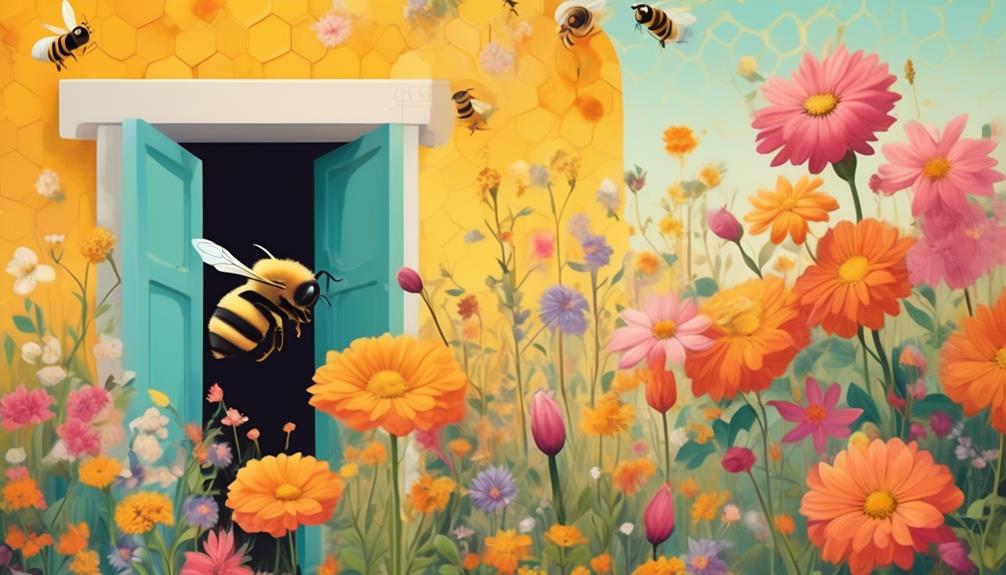
To fully comprehend why bees may be buzzing at your doorstep, it's essential to delve into the intricate patterns of bee behavior, examining the factors that influence their actions and reactions.
Bees, like any other creatures, follow a set of biological and environmental cues, directing their daily activities and survival instincts.
You've probably noticed that bees don't randomly fly about; they're on a mission. Whether it's collecting nectar for honey production, protecting the hive, or seeking a new location for colony expansion, every bee movement serves a purpose.
The presence of bees at your doorstep isn't accidental. Bees are attracted to specific scents, colors, and even the architectural details of your home. For instance, if you have flowering plants near your entrance, the bees' innate attraction to nectar could explain their frequent visits. Similarly, if your house's color resembles that of a flower or the hive, you might unwittingly be inviting them over.
Understanding these behavioral patterns is critical in managing bees around your home. Remember, bees aren't there to bother you intentionally; they're simply following their instincts, and your doorstep just happens to fall within their flight path.
Attractants Around Your Home

In assessing your home's potential attractants for bees, it's crucial you consider elements such as fragrant plants, bright colors, and certain structural features that could inadvertently draw them in. Your garden, for instance, could be a veritable banquet for these insects. Blooming flowers with strong scents, particularly those in shades of yellow, blue, and purple, are bee magnets.
It's not just about the flowers, though. Even your lawn, if it's lush and green, can attract bees as they're often in search of water and a cool place.
Structural features of your house, such as gaps in walls or under eaves, are also potential bee attractors. Bees are cavity-nesting creatures and they might see these spaces as perfect for setting up their home. Your house's color could also play a role. Bees are drawn to light, and bright or light-colored houses can be more appealing to them.
Furthermore, if there's a bee nest nearby, you're likely to see more bees around your home. They've a strong homing instinct and will return to their colony after foraging. So, it's essential to keep an eye out for such nests in your vicinity.
Potential Nesting Sites
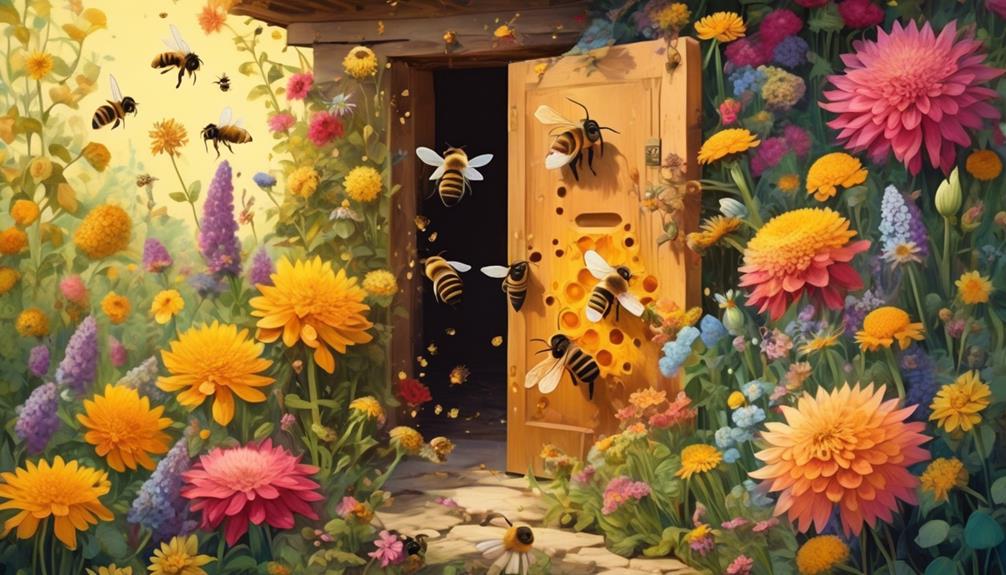
Understanding the bee attractants around your home sets the stage for recognizing potential nesting sites — places where bees not only visit but decide to stay. Bees aren't random in choosing their homes. They're looking for specific criteria to meet their survival needs.
Firstly, the proximity of food sources is paramount. If your garden is bursting with blooming flowers or you've a number of fruit trees, the likelihood of bees nesting nearby increases. They're highly efficient and prefer to minimize their commute to food.
Secondly, bees seek sheltered, quiet areas. Wall cavities, hollow trees, or even your shed might become their chosen residence. If there's a hole leading to a dark, undisturbed space, it's a potential bee home.
Lastly, water availability plays a big role. Bees need water for cooling their hives and for hydration. If you've a pond or birdbath, it could be an attractive feature for them.
Seasonal Bee Activity
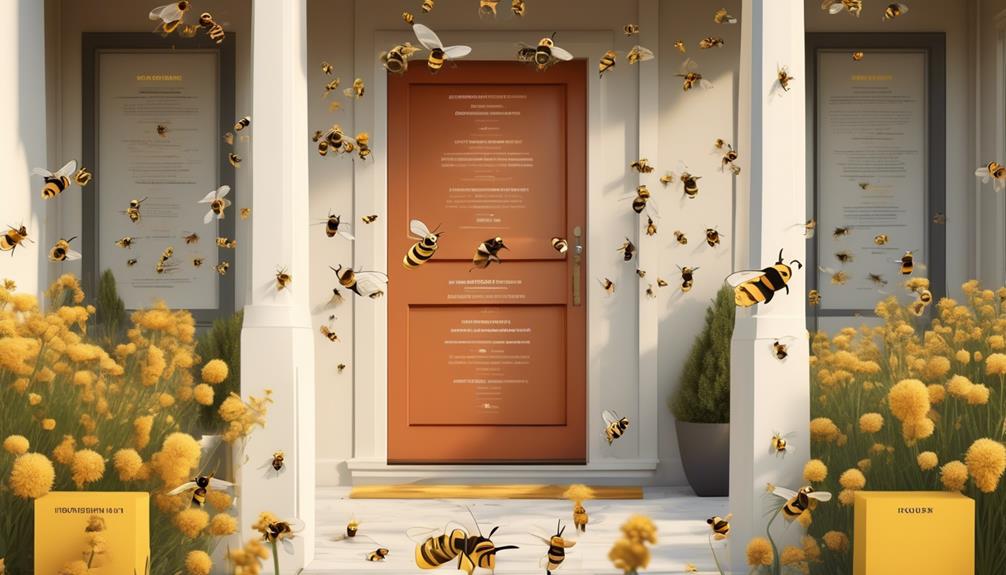
Just as the seasons change, so too does the activity level of bees, influencing their nesting habits and foraging patterns. During the warmer months, you'll find bees buzzing with activity. This is when they're most productive, busily collecting nectar and pollen to feed their growing colonies. You're more likely to have bees swarming around your door during spring and summer, as this is their prime foraging period.
When temperatures drop in the fall, bees start to prepare for winter. Worker bees die off, and the queen slows her egg-laying activity. The remaining colony clusters together in the hive, living off stored honey. So, you'll see fewer bees around your property during colder months.
However, it's essential to remember that bees don't hibernate. On warmer winter days, they may venture out for short cleansing flights. Also, certain species, like the winter honey bee, are more active during colder seasons.
Understanding these seasonal behaviors can help you manage your interactions with bees and potentially reduce their presence at your door. Remember, every bee activity has a purpose and is a crucial part of their survival and our ecosystem.
Prevention and Removal Tips
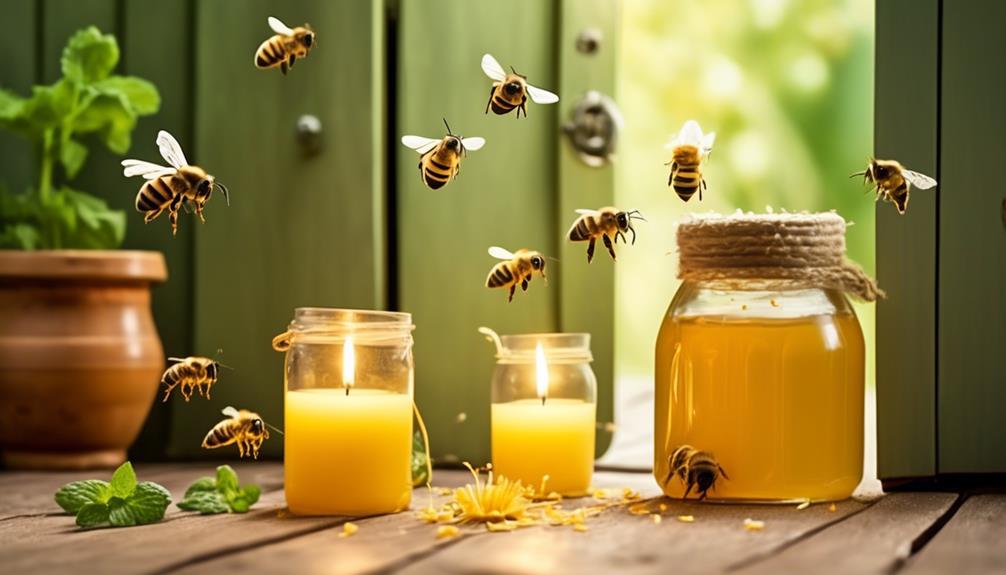
To effectively prevent bees from setting up shop near your door or to safely remove an existing hive, you'll need a combination of proactive measures, knowledge about bee behavior, and in some cases, professional help.
Firstly, prevention is key. Bees are attracted to certain smells, especially sweet or floral scents. Keeping these to a minimum around your entrance can deter bees. Regularly inspect your home for potential hive locations, like cracks in walls or holes in the ground. If you spot one, seal it off promptly.
Secondly, understanding bee behavior is crucial. Bees are generally non-aggressive and only attack when threatened. However, swarming bees could be a sign of a new queen and the formation of a new colony. In such cases, professional intervention may be required.
Lastly, if a hive is already present, don't attempt to remove it yourself. Bee removal is a delicate process and mishandling can lead to aggressive bee behavior. Contact a local beekeeper or pest control professional. They'll have the necessary tools and knowledge to safely remove the hive without causing harm to the bees or to you.
Frequently Asked Questions
Are There Any Health Risks Associated With Bee Stings?
Yes, there are health risks associated with bee stings. If you're allergic, a single sting can trigger a potentially life-threatening reaction called anaphylaxis. Symptoms include hives, swelling, difficulty breathing, and a drop in blood pressure.
Even if you're not allergic, multiple stings can still be dangerous, potentially leading to toxic reactions like dizziness, nausea, and even seizures. It's important to seek medical attention if you experience any severe symptoms following a sting.
What Is the Importance of Bees in Our Ecosystem?
Bees play a crucial role in our ecosystem. They're vital pollinators, transferring pollen and seeds from one flower to another, fertilizing them in the process. Without bees, our gardens would be bare and our plates empty.
They're responsible for much of the food on your table and contribute to the cycles of life and death in nature. So, you see, their importance extends beyond convenience or nuisance; they're essential for our survival.
Can the Presence of Bees Indicate a Certain Type of Plant or Vegetation Around My Home?
Yes, bees' presence can certainly indicate specific plants or vegetation near your home. Bees are drawn to certain flowers due to their nectar and pollen. If you've got a lot of bees, you likely have plants they're attracted to. You're essentially running a bee buffet.
Identifying these plants can help you understand why bees are frequenting your area. It's also beneficial for bee conservation, as you're providing vital food sources.
Are There Certain Types of Weather That Attract Bees More Than Others?
Yes, weather does impact bee activity.
Bees are cold-blooded and prefer warm weather. You'll see more bees when it's sunny and less during colder, rainy days. They're most active between 15-38°C.
Wind can also affect them, as it makes flying difficult.
High humidity levels can lead to increased nectar production in plants, attracting more bees.
What Are the Different Types of Bees and How Do Their Behaviors Differ?
You're curious about different types of bees and their behaviors.
Well, honeybees are social and live in hives while bumblebees prefer solitary lives. Carpenter bees are known for burrowing into wood, hence their name.
Each species has unique behaviors. For instance, honeybees communicate through dances, bumblebees can regulate their body temperature, and carpenter bees are solitary.
Understanding these nuances helps you appreciate bees' roles in our ecosystem.
Conclusion
So, you've been curious why bees are always at your door. It's likely due to attractants around your home, potential nesting sites, and seasonal activity.
Bees are fascinating creatures with unique behaviors. Understanding these can help you coexist peacefully. Remember, prevention is key, and if need be, safe removal methods are available.
So, next time you spot a bee buzzing around, you'll know why it's there and what to do.

